8 Iconic Fast Food Industry Logos And The Stories Behind Them
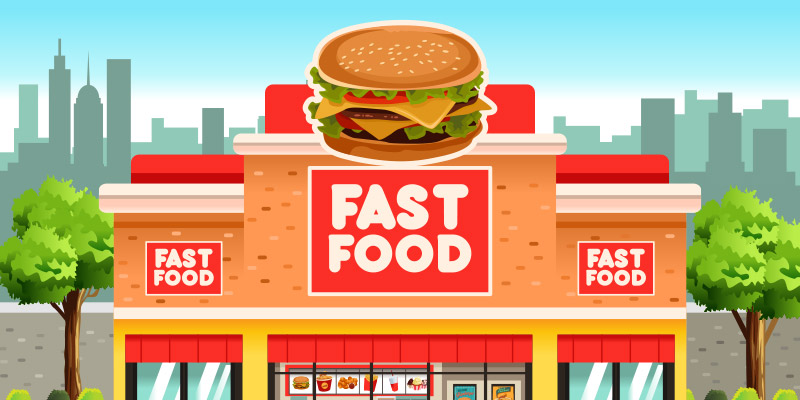
Featured Image: iStock/artisticco
Origin stories are always interesting tales to tell. They pack enough mystique, charm, and secrets in them to make the perfect ice-breakers. For us, these stories become even more fascinating in the backdrop of design. How a brand or a designer arrives at a concept, and why they choose one version of design over another, are captivating accounts.
Today, we take you along an excursion of logo design origin stories of 8 of the most iconic fast-food brands of our times. We have chosen these brands based on their global footprint (number of locations worldwide), and we hope you’ll like what interesting details we’ll uncover here.
You will learn, among other things, how some of the best, most iconic designs started as something entirely different. We will talk about the fundamental role logo design plays in branding. And we will also touch upon how precarious the balance is when considering a logo modification.
So, let’s start.
1. McDonald’s: The Tale Of Speedee And The Golden Arches
Whether you love its food or hate it, there’s no denying the beauty and brilliance of McDonald’s logo. It is possibly one of the most-recognized shapes on the face of the Earth. The double arches that make the letter M, the dazzling yellow color, and the sheer simplicity of the design makes it an unforgettable emblem.
So how did this fabulous logo come to be? Well, perfection came with practice. The original design of the logo was far from this clever simplicity. It contained a whole lot of different fonts, too many words, and even a mascot: Speedee.
Wait, what? Who’s Speedee?
So, this is how the story goes. The restaurant was the brainchild of Patrick McDonald and it started as a drive-in place. A few years later, his two sons took over the operations, relocated it, and renamed it: ‘McDonald’s’.
But the restaurant name wasn’t the only thing they changed. Under their supervision, the restaurant’s business model went through an overhaul. What was a simple drive-in turned into a Speedee Service Restaurant, the original version of ‘Fast Food’. The idea behind was the same: delicious food delivered with speed. To fulfill their promise of speed, they removed the entire barbecue section from the menu because it takes longer to cook.
To reflect these major changes, they decided to modify the architecture of the restaurant, too, and Stanley Clark Meston was given the task. Following the McDonald’s brothers’ suggestion, he used the golden arches as the architectural symbol of the new Speed-Service restaurant logo. These arches would later become the foundation of McDonald’s logo and its global brand identity.
In 1955, however, when the first McDonald’s logo was launched, there were no golden arches to be seen. Instead, there was Speede, the chef mascot who, for some reason, was winking –and posing. And holding a self-introductory sign just so there’s no confusion about his identity.
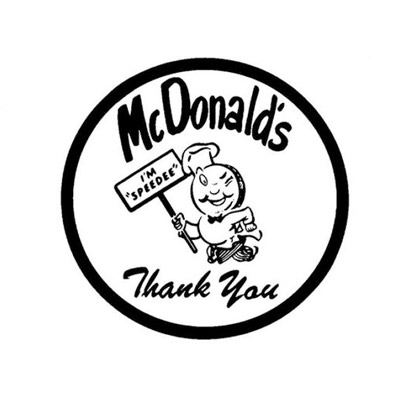
Image Source: The Daily Meal
Speedee remained a jaunting part of the McDonald’s logo for several years. In 1961, however, when Ray Kroc bought the company, Speedee was let go from the official logo and the golden arches made their first appearance on the design.
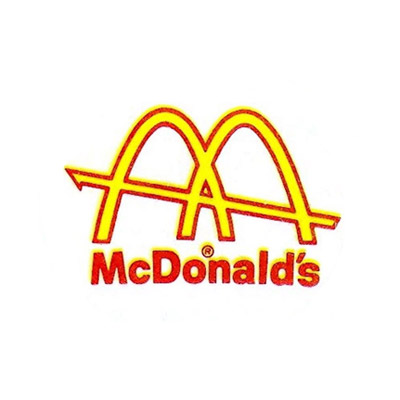
Image Source: Insider
Though the design looked much more streamlined, it still did not represent the letter M. The double arches were introduced to the design to reflect the architecture of the McDonald’s restaurant. However, as the restaurant chain kept gaining global recognition and popularity, Ray Kroc kept reimagining its brand identity and strategy. Eventually, it launched its iconic double arches logo in 1968.
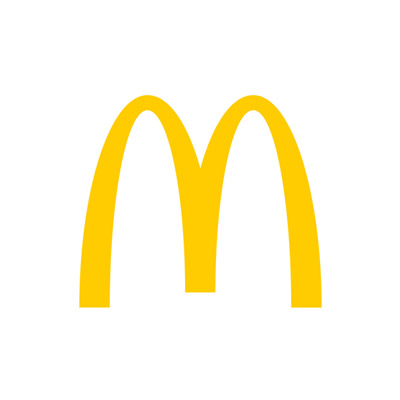
Image Source: Pinterest
This logo became globally popular and powerful. It was the perfect example of being a pure representation of the brand in more than one ways, and being simple and genius in its execution.
In 2003, the tagline of ‘I’m Lovin’ It’ was introduced to the design, along with the shadows in M’s arches.
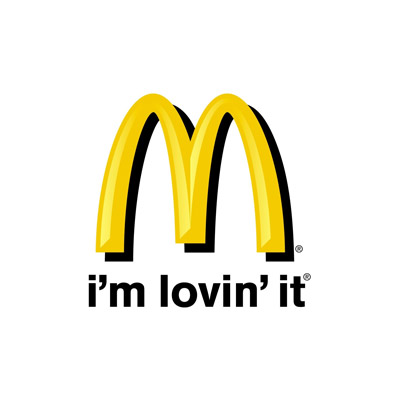
Image Source: HD Icon
It was part of a larger campaign that sought to familiarize the public with the restaurant’s new tagline. The campaign was an instant and insane success. It sparked a lot of reviews, praises, debates, and even research papers. The campaign remains one of the most successful ad campaigns ever. And the logo remains unchanged, even after 17 years.
While it’s a challenge to improve upon perfection, we’re definitely excited to see what McDonald’s can do next.
2. Burger King: The Original ‘Insta’
Before there was Instagram, there was Insta-Burger (Insta-Burger King, to be exact).
In 1953, Keith Kramer and Matthew Burns launched their fast-food restaurant in Florida after visiting a McDonald’s location. They were so inspired by its operations and service that they decided to start their own chain of restaurants. Burns had recently acquired a piece of new-age broiler equipment, called Insta-Broiler. They incorporated that into their new restaurant venture and created a specialty: instant flame-broiled burgers any way you want them. The concept was an immediate hit and they enjoyed great initial success. However, soon financial troubles started and the company was bought by two of its franchisees, James McLamore and David Edgerton. They renamed the restaurant chain Burger King brand identity and launched its first mascot logo.
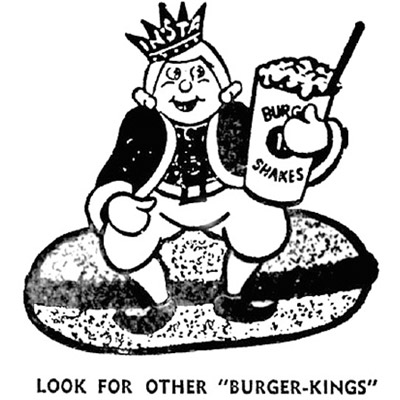
Image Source: Flickr
The king is sitting on the restaurant’s signature Whopper and holds a soda can with the words ‘burger’ and ‘shakes’ written on it. The crown also says ‘Insta’ though the word was not part of the official brand name anymore. The king remained on the logo for several years until 1969 when the company introduced its burger bun logo that became the foundation of all consequent logo redeisgns.
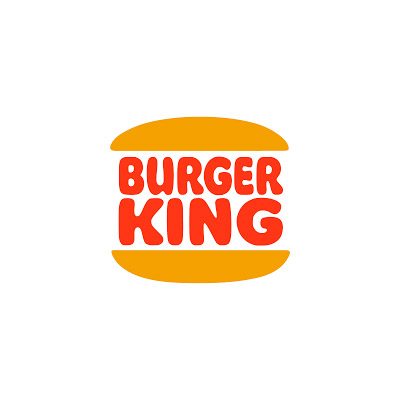
Image Source: Logos World
Over the years, BK’s logo has remained, for the most part, quite unchanged. Except for subtle font style changes and bun shape changes, nothing has been tinkered with. And it’s for the better. Helps with a solid brand identity that can transcend generations. It also advocates for logo design changes only to reflect the most fundamental changes in the brand or its products/services.
The last time BK’s logo had a design change was more than 20 years ago, in 1999. And that logo still remains today.
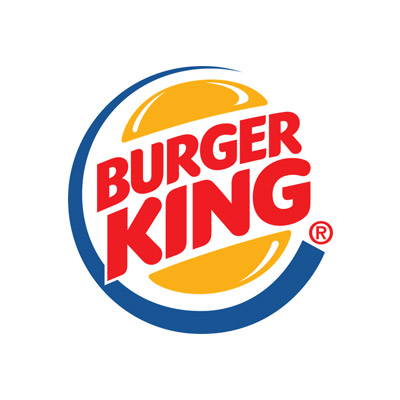
Image Source: Wikimedia
3. Domino’s: All Thanks To The Delivery Boy
Delivery people are the unsung heroes of the pizza delivery services. If not for them, we would all be living in a world where we’d have to leave a Lakers game in the middle of it and go pick up our pizzas ourselves. And who wants that kind of negativity in their life.
So while we bow down to all the pizza delivery people of this world, this one young dude from the 60s earns the biggest slice of our respect. Sometime in 1960, there was a small pizza restaurant chain, DomiNick’s Pizza. The chain was appropriately successful and soon caught the eye of the two brothers, Tom and James Monaghan. The brothers bought it and Tom drew up expensive plans of how he was planning to turn it into a countrywide chain. The new business was demanding work and just 8 months in, James sold his share of the company to his brother and walked out. He didn’t want to risk his established job as a local postman.
Tom went on to buy two more local restaurants and planned to turn all three into franchise-style establishments with similar architecture, décor, and ambiance. He faced resistance from DomiNick’s original owner who didn’t want him to use his restaurant’s name. Tom needed to come up with a new name immediately. A delivery boy suggested Domino’s Pizza as the world domino sounded quite similar to Dominic. Tom loved the idea and Domino’s Pizza was born. Later, the word ‘pizza’ would be dropped from the brand name as the restaurant’s menu got extensive and they didn’t want to be bogged down by a restrictive brand name.
Domino’s original logo consisted of two domino pieces – one with three dots on it, representing the restaurant’s three locations, and a red one with Domino’s Pizza written on it. The rounded corners gave the brand a friendlier, more approachable look.
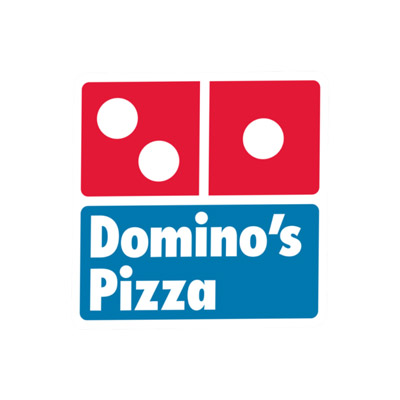
Image Source: Roblox
Later, the rounded corners were traded in favor of sharper turns and the alignment of the logo went through some changes, too. The colors also became more saturated while the font remained unaltered.
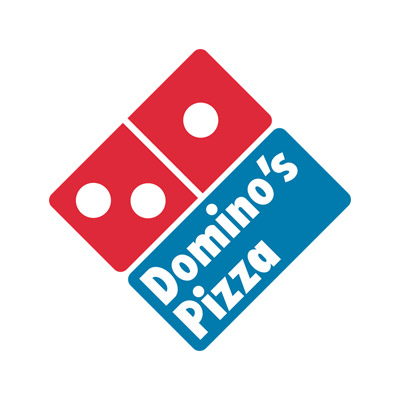
Image Source: Wikimedia
In 2012, the restaurant brand logo was launched in its most streamlined version yet. This new version is still in use today and sports the dotted domino in red and blue while the brand name sits at the side of it in the same original font. The tilted domino also acts as the emblem for the brand and is easily recognizable without the brand name accompanying it.
Now, that’s what you call recognition.
4. Dunkin Donuts – Are We There Yet?
One of the few logo designs on this list that has gone through the most frequent and extensive changes over the years. When you follow the trail of Dunkin’ Donuts logo redesigns, you’ll discover that those responsible for designing its logo never seemed to get it just right – there would always be something missing.
Before we address that, though, a bit of history.
So, the restaurant was christened Open Kettle when it was launched in 1948. It only sold coffee and donuts, after the restaurant owner noticed these two were the most popular food items at factories, construction sites, and similar places. Two years later, the restaurant’s name was changed to Dunkin’ Donuts and started gaining immense popularity.
The first logo design company decided upon was the perfect reflection of its time. A jaunty font, very much like hand-writing, was used to spell the brand name and the brown color of a freshly brewed coffee was used to illustrate the type-based logo design.
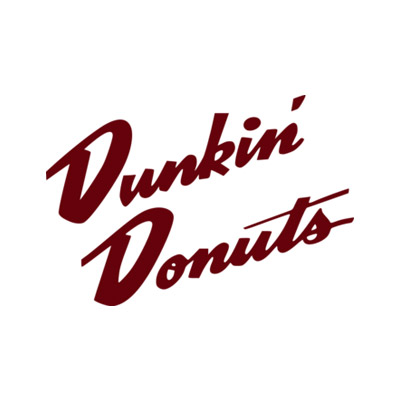
Image Source: Logopedia
Not too bad, is it? The font is a bit pudgy but so are the donuts and one can argue that it’s a deliberate choice to reflect the thickness of the donuts. The coffee-brown color, however, does not look appetizing. The company executives apparently thought so, too, and a redesigned logo was launched which they considered as a more reflective and cheerful design.
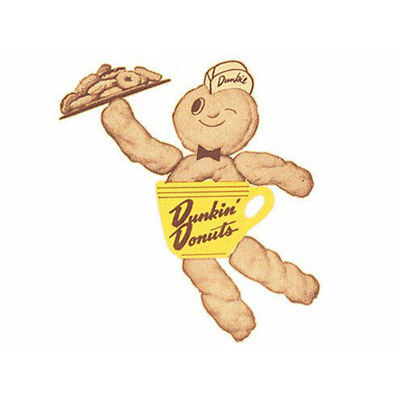
Image Source: Vix
This donut mascot Dunkie was made of donuts, carrying a tray full of donuts, and wearing a coffee cup. You cannot fault the designer for not making sure that people looking at it will confuse it with some other food logo – it was that obvious.
In 1960, it was determined that Dunkie needs to go and a more professional and smart look was needed for the brand. In this latest redesign, they did use the coffee cup and donuts again, but in a more restrained manner.
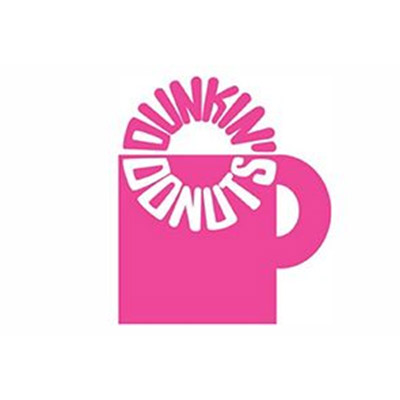
Image Source: Pinterest
This time a decidedly cheerful shade of pink was chosen to represent the brand with the brand name circled to look like a logo that’s being dunked in the mug. Not bad. The logo remained a part of the brand for quite some years before it went through a round of more redesigns. The company experimented with the design quite extensively after some years of quiet. There was a time when the coffee mug was removed and only the donut-shaped lettering remained. Then several years where the logo was in black and white color. Eventually, in 1976, the signature pink and orange colors were chosen that have now remained a part of the Dunkin Donut brand for many decades. The go-to coffee cup was added to the design in 2002 but it was removed from the official logo in 2019 when the restaurant went through a major rebrand which also included the name change.
In North America, Dunkin Donuts was re-launched as Dunkin’ in 2019. Soon, the rebrand will be rolled out to all the worldwide locations of the brand. And does this rebrand include a new logo, too?
You bet.
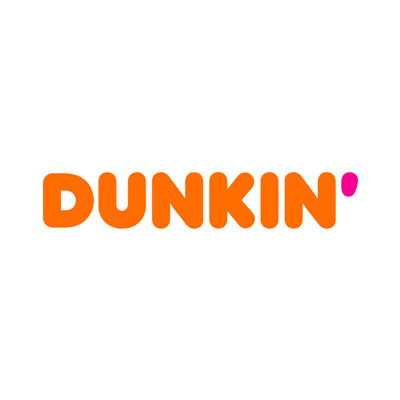
Image Source: Wikimedia
Again, not bad.
5. Subway – It Keeps Getting Better
Did you know that when it comes to restaurant locations within the USA, Subway far surpasses the biggest fast-food chain restaurant, McDonald’s? With its nearly 24,000 locations in the USA, Subway has a larger footprint than McDonald’s in the country. It also has a very interesting origin story.
The restaurant was opened in 1965 as a sandwich shop called Pete’s Super Submarines. It was started by two friends, Fred DeLuca and Peter Buck, with the former borrowing $1000 from the latter. The restaurant was launched with the intention of funding DeLuca’s dream of going to medical school and paying his tuition himself.
By 1968, the restaurant had become extremely popular. It was rebranded as Subway and the iconic arrows had made their debut on the restaurant signboard. Initially, the Subway logo was a pretty simple type-based logo in yellow. The only defining characteristic was its arrows shooting from S and Y.
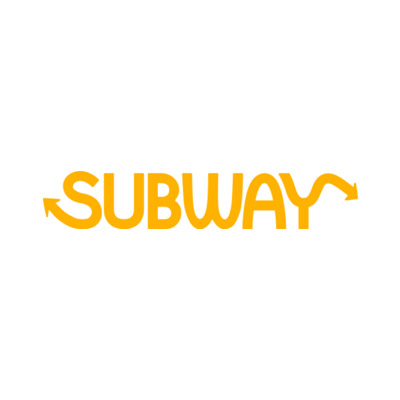
Image Source: Fandom
By the time 1968 rolled around, the logo had already gone through its first revision. More colors were introduced and an oval background was added. The font style was also changed and the whole thing looked amazingly well put-together.
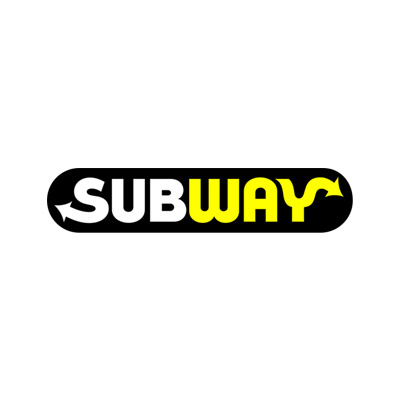
Image Source: Fandom
This logo survived till the early 2000s relying on its different variations. One variation used a green background instead of black. In another, a transparent background was used. Since the logo design presented a very stable and solid brand image, no major changes were made to it as the company kept growing.
From 2002 to 2016, the logo went through some more changes. At one point, it contained only one color – green – in its design. The font style was also changed to italicized characters. Overall, however, a design theme using the thick italicized letter and the green-yellow-white color scheme was agreed upon.
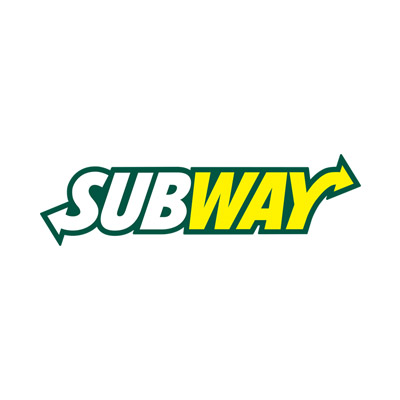
Image Source: Wikimedia
In 2016, the brand went through a major logo design change.
The previous format style was completely discarded and a more elegant and modern type was chosen. The border around the letters was also removed in favor of a more solid look. White was eliminated the iconic green and yellow of the brand were retained. The color saturation was also improved. Gone is the slight sheen and in comes the flatter, deeper shades of yellow and green.
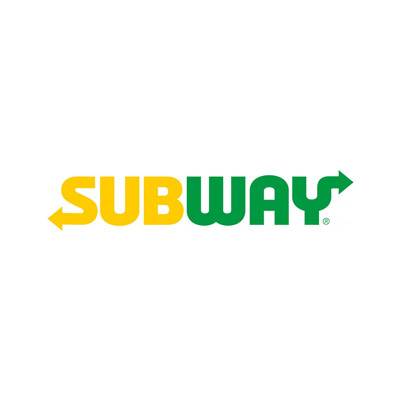
Image Source: Pinterest
In addition to the refined logo, the brand also released an emblem. A pictorial symbol that could stand alone, when needed, in place of the fuller logo.

Image Source: Subway
As the brand continues to redefine itself as a health-oriented sandwich shop and not just another fast-food joint, we are rather excited to see what logo design they’ll come up with next to reflect their changing brand philosophy. Because up till now, their logo game has been pretty strong.
6. Wendy’s – Wholesome And Witty
Very much like Subway’s logo, Wendy’s logo is also one of the most stable and consistent icons of all time. Launched for the first time in 1969, the adorable, wholesome logo has not gone through much change in all of its (more than) 50 years.
It still sports the cute red-haired girl with two little pigtails with an adorable smile on her face. The font style is very much reminiscent of the old Western movies. The vibe of the logo has always been wholesome and family-friendly. Perhaps that’s because the little girl on the logo was based on a real girl, the daughter of the founder.
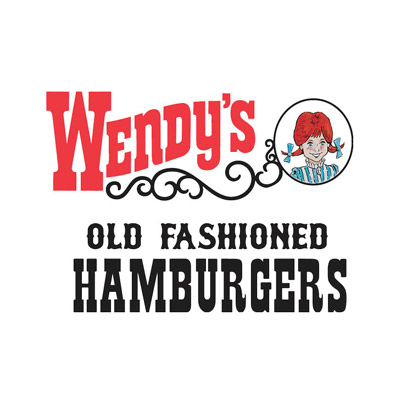
Image Source: Fandom
The restaurant was founded by Dave Thomas, an old employee of KFC. As a former employee of such a successful restaurant chain, he knew a thing or two about the importance of persona in branding. Therefore, he asked his daughter to pose for a photograph that could be used as the basis for his new restaurant logo. He even decided to name the brand after her to make the restaurant look even more family-oriented.
A decision that he apparently regretted later in his life. But the logo and the company gained instant success, and no matter how soon he started regretting his decision, he could not change anything now.
That’s not to say that nothing about the logo was changed in subsequent years. In 1971, the tagline ‘Quality is our recipe’ was added to the logo. In 1975, the logo acquired darker, more saturated colors, and the pigtails became more horizontal, which, to be frank, looks disturbing.
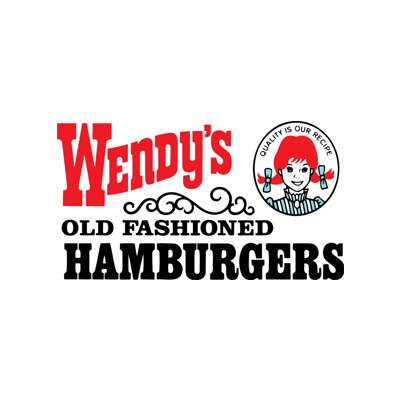
Image Source: Fandom
The intervening years saw Wendy’s logo sporting more colors – yellow and white were introduced to the design – plus a shield-like plate was added to the design in 1982.
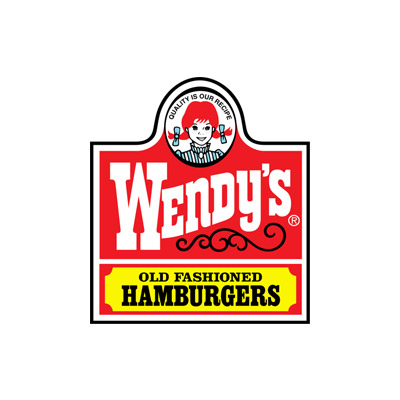
Image Source: Fandom
This logo remained the official emblem of the restaurant brand (with some standalone variations) from 1982 to 2012. While this old logo was definitely wholesome and heavy on nostalgia, the brand needed to mold itself to suit the aesthetics and tastes of the modern world. So, in almost 50 years, the logo got its first overhaul.
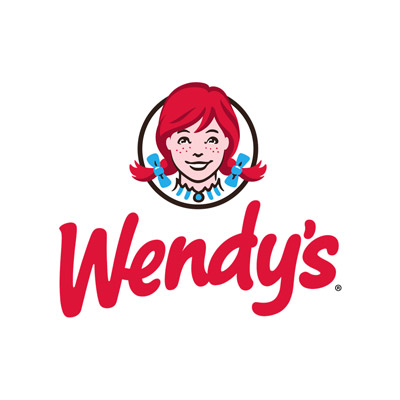
Image Source: Wikipedia
Gone were the shield, the stocky, Western letters, and the glaring colors. Her straighter pigtails also got some changes and became more natural. Her smile became brighter and bigger, and she got a neat little secret hidden away in the lines of her collar (they spell out ‘mom’; for anyone interested to know).
This latest logo also sported a modern, very friendly typeface in a signature format that retains the personalized look of the logo. All in all, this design remake has given the brand a much-needed face-lift that perfectly matches its snazzy vibe that’s popular all over Twitter.
7. Taco Bell – What’s The Connection?
The cardinal rule of good logo design is to choose icons and symbols that provide an immediate relevance to the business idea. So, what’s happening with the Taco Bell logo? What’s the relevance of a bell with tacos?
Turns out, the ‘bell’ in Taco Bell is not a literal bell but a last name. The last name of its founder, Glen Bell.
Glen Bell was a former marine who found himself jobless and purposeless after the Second World War. Wandering around the streets of his city and watching long queues outside Mexican restaurants, he soon realized that a taco business can turn his fortune around.
So, in 1962, he took tacos and his last name and started the new restaurant. Initially, the brand logo had a massive vibrancy to it. Glen Bell based the logo on the colors of the Mexican flag. Coincidentally, all the colors turned out to be extremely relevant to the food industry: yellow, green, and red.
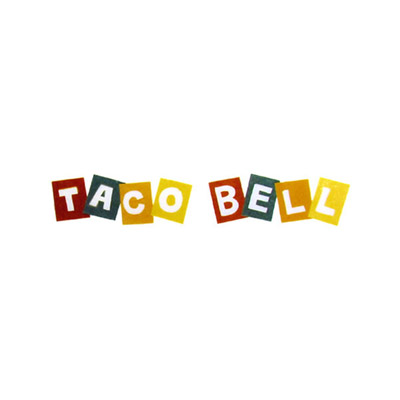
Image Source: Logopedia
The type-based logo was simple in its execution but definitely on the mark in terms of being colorful, exciting, and inviting. Therefore, it’s somewhat puzzling why the next design change turned the logo into this bland and dark place.
In 1972, ten years after the original logo was launched, the new logo arrived on the market. A complete turnabout from the previous happy and exciting logo.
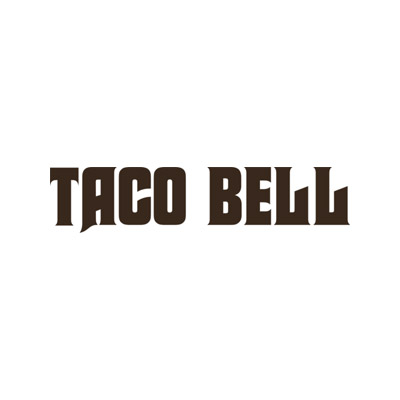
Image Source: Logopedia
It was a weird color of brown-green and the type was too thick and uninspiring. Nevertheless, the logo remained a part of the official brand till 1985, when, once again, the logo took a colorful turn and went back to its roots of Mexican colors. Once again, it became interesting.
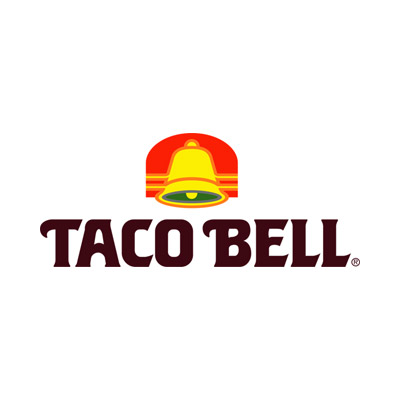
Image Source: Logopond
We still cannot explain the company’s insistence on this dull brown color on its brand name, but at least the logo icon is alive. It is also the first time a bell has appeared on the brand’s professional logo. In time, it will become a permanent part of the logo design and will become its official emblem.
In 1992, the company again changed colors and this time settled for purple. Since then, the color purple and the bell icon have become official symbols for the brand and have not changed in all of the company’s subsequent rebranding efforts.
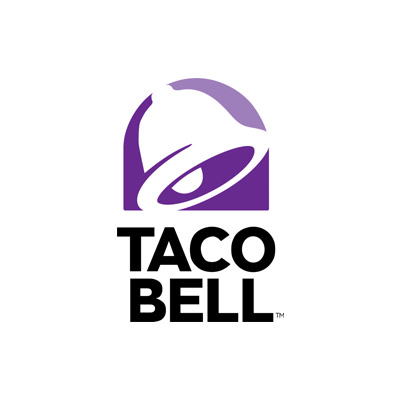
Image Source: Wikipedia
It is quite apparent that brand has repeatedly tried to redesign its logo in the attempts to look modern and hip – but every time they have traveled far from its roots, they have missed the mark. The color purple, the black typeface, and the shadowed bell icon do not have any connection to tacos. The whole thing looks forced. Instead, subtler shades of vibrant yellow, green, and red could have helped the matter.
A word to the wise: always look for less drastic variances to your brand logo when redesigning is inevitable. Do not go for design elements that do not have any relevance to your main business offering.
8. KFC – They Finally Got It Right
KFC’s logo story is quite popular. Hardly anyone in the modern world will be unaware of who the smiling old man in the KFC logo is. So consider this entry the retelling of a favorite tale.
It all started way back during the Great Depression when Harland Sanders started selling ham, chicken, and other food items from outside his service station in North Corbin, Kentucky. The popularity of his restaurant, especially of the fried chicken that he made with a secret recipe of 11 herbs and spices, grew rapidly. In 1935, he was given the honorary title of Colonel by the Kentucky governor and he started using that title as part of his name.
In 1952, he franchised his secret recipe for the fried chicken to a successful restaurateur in Utah, Pete Harman. The deal was an instant success. The same year, the recipe was officially named Kentucky Fried Chicken, its first logo launched, and Colonel Sanders started traveling the country in earnest to franchise his fried chicken concept.

Image Source: Logopedia
His efforts resulted in popularizing his fried chicken not only in the country but out of it, too. By the mid-1960s, his chicken brand was selling in the UK, Canada, Mexico, and Jamaica. In 1962, he patented his recipe, his method of frying chicken, and a year later, trademarked the phrase, ‘It’s Finger-Lickin’ Good’.
In 1978, the logo went through its first design change. The font style became more pronounced and the layout more balanced. The colonel’s face also acquired more smooth lines.
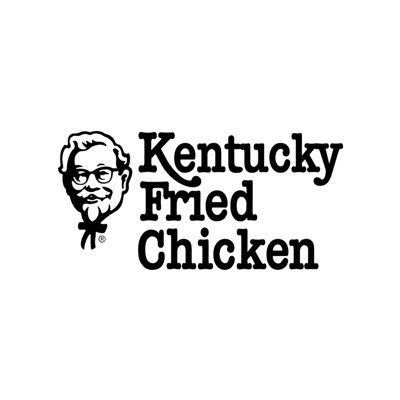
Image Source: Logopedia
From 1952 till date, KFC’s logo has changed multiple times but the Colonel has remained a consistent element of its design. While earlier logos were in black and white, red was introduced to the design in 1991.
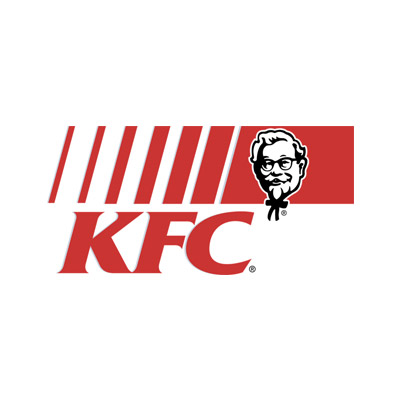
It made the logo look more distinct. Red was a smart choice as it has long been associated with food design. It evokes urgency, passion, and hunger. Sentiments very useful to a quick-service restaurant chain. But the most visible change was the rebranding of the restaurant as KFC. It was done to deflect the attention from the word ‘fried’ in the restaurant name. The company deemed it negative as people had increasingly started to associate an unhealthy image with fried food.
The next change to KFC’s logo design came in 1997.
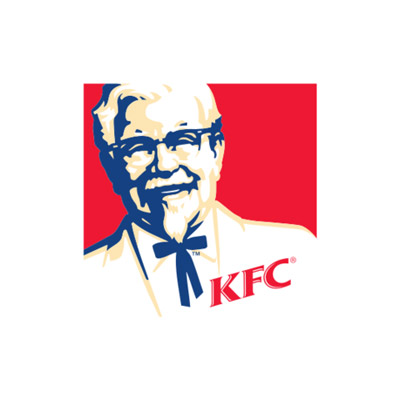
Unlike the previous KFC logos, this was decisively a mascot logo for the brand. While the Colonel had always been a consistent part of KFC’s visual identity, in this specific redesign, he became the central, most visible aspect of the logo, with the brand name only given the secondary space. But perhaps it alluded to something more important. It was a kind of acceptance on the brand’s part that more than the brand name itself, the Colonel was what gave the brand its global recognition.
In 2006, the brand logo got settled into a red circle, the color highly richer this time, and the Colonel was seen with his white-striped red apron. Very nice visuals, KFC.
The logo started looking friendlier, more inviting and made you think of freshly prepared food with the chef ready in the kitchen, with his apron and all.
The most recent KFC brand logo, unveiled in 2018, is a combination of a throwaway design of 1978, with a black and white Colonel sketch and two thick stripes of red on both sides of his face. The shape of the borders around the logo looks quite bucket-like. Most specifically like KFC’s bucket.
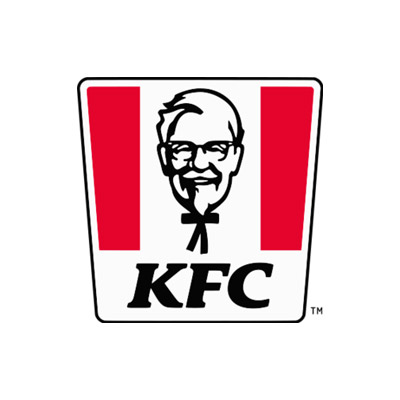
This design change has combined the best of both the old and new KFC logo. The Colonel is friendlier and inviting. The shade of red is properly appetizing, very ketchup-like. And the shape puts you in the mood to order a large bucket, because, why not.
So, What Do You Think?
Logo design facts and history is an interesting subject. Through these visuals, a keen eye can see the many changes a business goes through over the years. We hope this discussion has not only been fun and informative but inspiring and knowledgeable, too.
What restaurant logo histories you want us to explore next, let us know in the comments!


